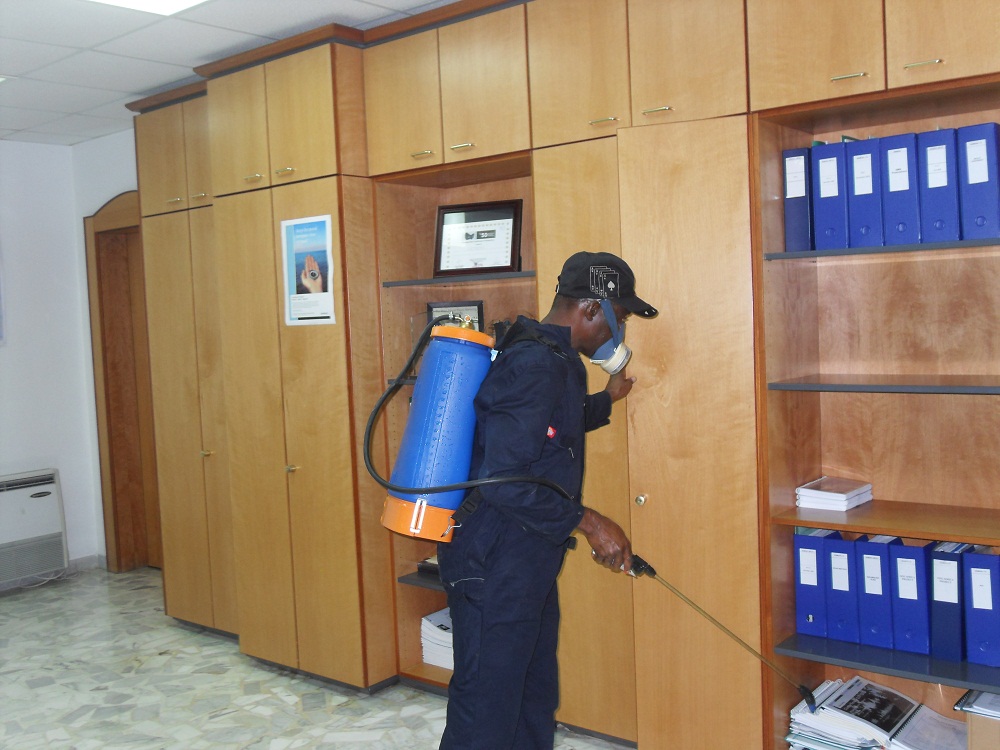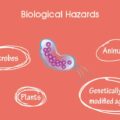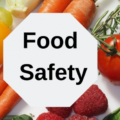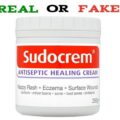What is Fumigation?
Fumigation can be defined as a technique that employs various chemicals (fumigants) to eliminate pests and insects from homes, buildings, and processed goods. It is an invasive procedure that requires all other humans and animals to be outside of the home for anywhere from several hours to an entire week, so it is not often the first line of defense. However, particularly stubborn pest infestations may require fumigation to be effectively taken care of. The operation is hazardous and all fumigants are harmful to humans to some degree. According to the United States Department of Agriculture, prevention is better than cure when it comes to insect control, and a combination of sanitation, mechanical controls, and the use of harmless inert compounds will prove safer and more viable alternatives to fumigation.
Types of Fumigation
Gas Fumigation
Gas fumigation employs fumigants in their gaseous states for pest control. This method of fumigation, called space fumigation, ensures toxic fumigants are not dispersed to the external environment.
Solid Fumigation
Solid fumigation systems and techniques employ solid fumigants for insect control. Solid fumigation is carried out by sprinkling tablets, powders, or pellets of measured quantities of fumigants. Aluminum phosphide is a solid fumigant that eliminates pests and insects in all stages of development (eggs, larvae, pupae, and adults). It is typically used for pest control in flour, tea, doffer, cotton, and grain.
Liquid Fumigation
Liquid fumigation employs liquid fumigants for mold, pests, and insects. Liquid fumigation is carried out by sprayers, which disperse large quantities of liquid over the desired area. Most liquid fumigants are toxic to humans, flammable, and volatile.
Fumigation Hazards
Inhalation is the most dangerous and common route of exposure to fumigants. Most are highly toxic so breathing even small amounts can cause serious illness or death. Exposure also can occur through your eyes, mouth, or skin. The label will list the personal protective equipment (PPE) that the manufacturer requires.
Types Of Inhalation
Mild inhalation: Exposure can cause a feeling of sickness, ringing in the ears, fatigue, nausea, and tightness in the chest. Exposure to fresh air will usually relieve these symptoms.
Moderate inhalation: Exposure can cause weakness, vomiting, chest pain, diarrhea, difficulty breathing, and pain just above the stomach.
Severe inhalation: Symptoms of severe inhalation exposure may occur within a few hours to several days after exposure. Severe poisoning may result in fluid in the lungs. This can lead to dizziness, blue or purple skin color, unconsciousness, and even death.
Do not attempt to rescue someone in an enclosed area if you are not wearing the proper respiratory protection.
Fumigant Exposure Limit
A fumigant exposure limit is the highest level of fumigant that you may be exposed to without being required to use any controls to reduce your exposure. You also can reduce your risk of inhalation overexposure by monitoring fumigant concentrations during treatment and aeration. Be sure your exposure stays below established exposure limits.
Personal Protective Equipment
Personal protective equipment (PPE): Clothing and devices that minimize your exposure to a pesticide. The label lists the minimum required PPE. Federal and state laws require pesticide users to follow all instructions on the product label, including wearing the appropriate PPE.
Respirators
The main types of respirators are:
1) atmosphere-supplying respirators and
2) air-purifying respirators.
They must be approved by NIOSH (National Institute of Safety and Health). The specific type of required may vary depending on applicator health, type of fumigant used, and working conditions. Atmosphere-supplying respirators use canisters to supply breathable air or draw air from outside the fumigation area.
Other Protection Equipment
Fumigant labels also may require other types of PPE, including protective clothing and gloves. Requirements vary so read the label information carefully. Labels recommend loose-fitting clothes, long-sleeved shirts, long pants and socks for skin protection. Others do not specify.
The need for gloves also varies. Applicators must wear gloves because of possible skin irritation and some solid fumigants. Labels of liquid products do not require gloves and may prohibit wearing them. Learn which items are required for the product you plan to use.
Whenever possible, provide two-way radio communication between workers applying fumigants and those outside. Also, keep on hand:
- An emergency air-supplying respirator, especially if canister-type respirators are being used
- Antidotes where applicable
- A safety harness or rescue belt
- Basic first aid equipment
First Aid for Fumigant Poisoning
Human exposure can occur even when you take all of the proper precautions. Unusual behavior by you or your fumigation partner could be a sign of exposure. Know what to do. The label information is your best source of information. First aid procedures on it usually are specific to the product. If you suspect fumigant exposure, remain calm, get to fresh air, and call for help immediately. Take a product label and Safety Data Sheet with you to the emergency room or health department. If you are with someone suffering from inhalation exposure, carry him or her to fresh air immediately.






